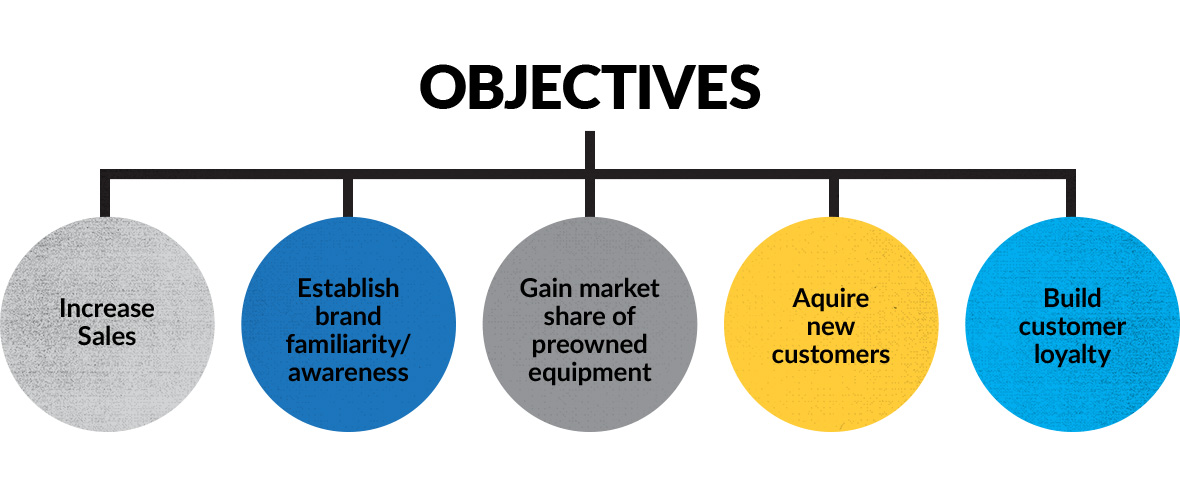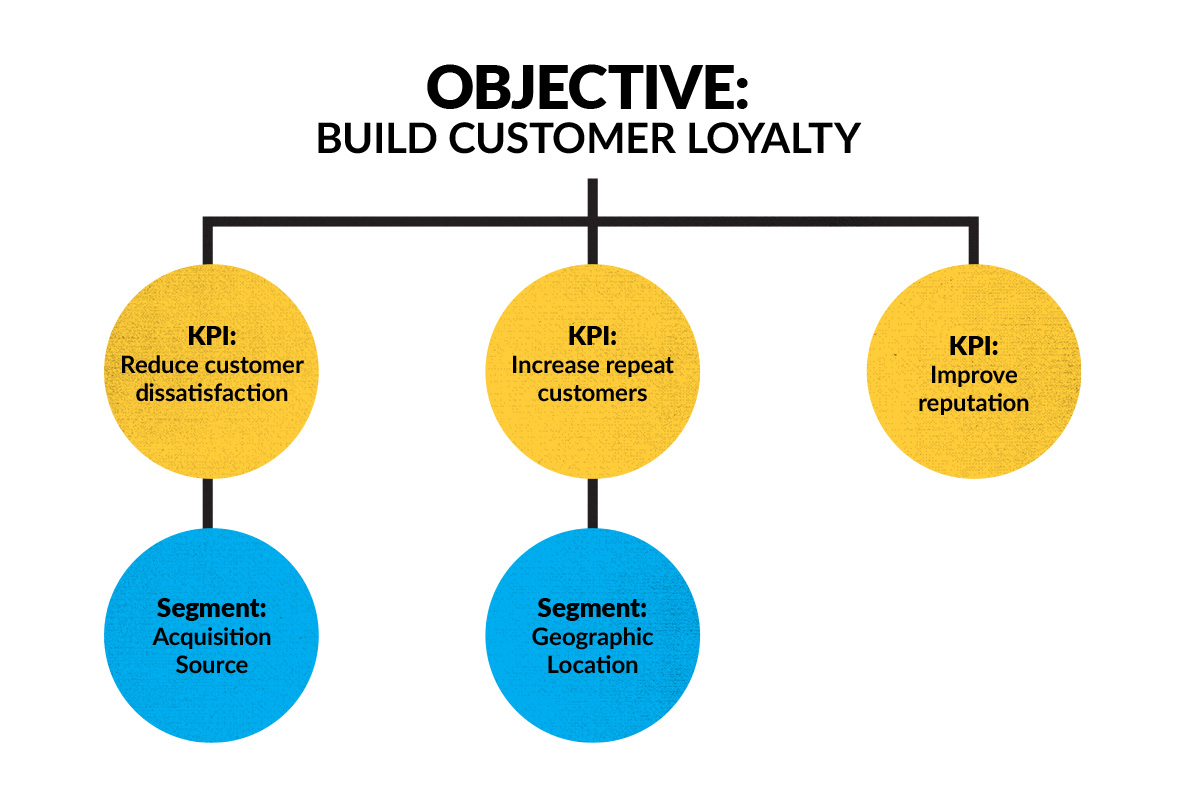Your Blueprint for Marketing Success

If you have spent some time in Google Analytics, Piwik or Adobe Analytics, you’ll find the power of website analytics can be jaw-dropping. You will quickly realize how your company uses analytics to report on and inform your strategies and marketing efforts can be arrived at from an infinite number of paths. In short, your implementation and incorporation of website analytics is very unique to your business and your goals.
There is one aspect of analytics, however, that remains an absolute necessity for effectively using analytics, regardless of which of those infinite paths you end up taking: creating a Measurement Plan.
What is a Measurement Plan?
From our experience in marketing and analytics across a wide variety of industries, we’ve seen how a surprisingly large number of businesses operate in the dark when it comes to website analytics. That’s not to say that these businesses had necessarily lost sight of their company vision, value proposition or profitability requirements. But the resources invested to accomplish these initiatives and measure their effectiveness were largely unaccountable and included mere estimations at best.
Not too long ago, such a lack of accountability was to some degree unavoidable. Whereas the ROI of traditional television and print ads could be estimated by the impact on overall revenue, customer size, etc., a definite correlation between a given initiative and its results was impossible. In the rapidly evolving world of website analytics, businesses no longer have an excuse to operate under such impairment. Analytics not only has the power to correct your eyesight, it can give you x-ray vision. The tremendous value of a platform like Google Analytics and its relatively recent addition to what we would include as a business requirement make it both one of the most pivotal components of profitability and a source of unrealized potential.
Making sure you’re equipped to reap the benefits from your website analytics is simple – all it takes is a well-thought-out Measurement Plan – a document that clearly identifies the core objectives of your business and supports them with the metrics necessary to communicate how aligned those objectives are with reality.
Next we’ll walk through the 5-step process of creating this plan to ensure every action you take is accountable to specific, data-driven indicators of effectiveness.
Step 1: Defining Your Objectives
Whether your website is an ecommerce store, a blog, or a marketing website, it was created for a specific purpose. When creating your Measurement Plan, you will want to take a step back and adopt the frame of mind you were in during the business planning phase. When pitching the business model, investors or partners needed to know what your concept offered to the relevant market(s). Successful businesses create customer value by solving problems. Defining the objectives of your Measurement Plan should mimic this process.
During the Objective definition phase of this process, start by asking yourself what is the primary purpose of your website. This may seem straightforward, but it’s critical to establish clear purposes which dictate all marketing, branding and content creation efforts. This step will usually require more thinking than you may initially suspect. If not, stop and make sure you’re touching on all aspects of the business, not just the obvious.
A basic (and incomplete) approach for the three different types of websites just mentioned might look like:
- Ecommerce: sell golf equipment
- Blog: acquire emails from readers
- Marketing Website: drive traffic and convert into leads
While not incorrect, this fails to adequately represent the key components of success. Yes, the website should sell equipment, gain a following and generate ad revenue, but what other aspects are inherently critical for success? A more accurate approach might look like:
- Ecommerce: 1) sell golf equipment; 2) become a nationally recognized brand; 3) generate preowned trade-ins
- Blog: 1) acquire emails from readers; 2) establish voice of authority across social media; 3) generate affiliate revenue; 4) serve as a resource for a specific audience
- Marketing Website: 1) drive traffic; 2) engage prospects; 3) generate leads
For simplicity’s sake, let’s stick with the first example as a model for the remainder of this post: an ecommerce site that sells new and used golf equipment.
Sales, certainly, is going to be one of our main goals. For the purpose of creating a Measurement Plan, we also want to consider secondary objectives that go hand in hand with revenue, and should be equally as important to measure.
The basis of a good Measurement Plan might include the following objectives:

Step 2: Goals and KPIs
Now that the business objectives have been defined, they need to be represented by the specific strategies and tactics employed to achieve each objective. In other words, how are you going to accomplish A, B and C?
To illustrate, our golf etail site might associate the following KPIs for each objective.
| Objective | KPI |
|---|---|
| Increase Sales |
|
| Establish Brand Familiarity/Awareness |
|
| Gain Market Share of Preowned Equipment |
|
| Acquire New Customers |
|
| Build Customer Loyalty |
|
After these KPIs have been established they should be approved by the key stakeholders to confirm relevancy, and by the board to ensure they are in alignment with vision and expectation.
Step 3: Measurement
When consulting with businesses, the area we often see most neglected is an accurate system of measurement. Often times, objectives and goals are believed to be generally understood or obvious, and therefore a Measurement Plan is never created. Without one, not only is it unclear what strategies will be used and how they are connected to the key objectives, but nothing is ever put in place to track the performance of the efforts surrounding those strategies.
With analytics, there’s little that can’t be measured for the purpose of tracking performance. At this point in the process of your Measurement Plan, you already have a clear understanding of your business’ primary objectives and the key performance indicators that will inform how aligned they are. Now it’s time to define what the specific metrics are and how they will be measured. This is also the point to incorporate any targets you may have.
For ecommerce, the overarching goals are going to be tied to sales. Setting up Google Analytics’ ecommerce capabilities with your shopping cart has become quick and easy from a technical point of view, and typically involves just a few lines of code. Once integrated, the ecommerce section of Google Analytics arms you with a robust suite of reports out of the gate. This is where we’ll go for top line revenue as well as key performance indicators like average order value, category performance, conversion rates, funnel exits and more.
Going back to our golf equipment website, our Measurement Plan would develop into something similar to the following.
| Goal: Increase Sales | |
|---|---|
| KPI 1: Increase Revenue | Measurement: Sales Measurement: Transactions |
| KPI 2: Reduce Cart Abandonment | Measurement: Cart Abandonment Rate |
| KPI 3: Increase Cart Totals | Measurement: Average Order Value |
| KPI 4: Increase Upsell and Cross Sell | Measurement: Average Items Per Transactions |
| KPI 5: Improve Cart Effectiveness | Measurement: Conversion Rate |
For the goals we’ve identified that are not necessarily tied to a purchase, we can measure through any number of data sources.
| Goal: Establish Brand Familiarity/Awareness | |
|---|---|
| KPI 1: Increase Searches for Brand Name | Measurement: Branded Traffic |
| KPI 2: Improve Social Presence | Measurement: Social Following |
| KPI 3: Increase Referrals | Measurement: Backlink Profile |
| KPI 4: Increase Sales from Affiliate Marketing | Measurement: Affiliate Marketing Revenue |
On a final note with respect to the measurement aspect of your plan, this is the phase where you’ll want to include any targets you have defined for your KPIs. You may find that for some KPIs you don’t have specific targets for that year, month or week. But for those areas where you do, there’s no better place to consider them than in your Measurement Plan. Yes, your targets could and should be dynamic (in that they will fluctuate based on time of year, promotional activity, etc.), which is all the more reason to report on them within a stable construct. Your plan will be updated to account for changes to historical data and current targets, but the structural pieces will remain static.
Step 4: Segments
For most of your objectives, you’re going to want to associate a particular audience, or segment. As with any type of business or website analysis, segmenting your data is a critical component of gaining insights and turning that knowledge into actionable comprehension. In most cases, we recommend reporting at the aggregate and segmented level. This establishes a baseline, or average at the aggregate level, which provides context for the segmented perspective.
When defining your segments, think of each as an additional component that empowers the data you’ve collected thus far. For example, it’s extremely valuable to understand that Q1 sales are up 20% following reduction in cart abandonment, thanks to a shopping cart redesign – but when we’re able to apply segmentation by device and see that 80% of that lift came traffic on smart phones, we’ve moved beyond reporting on key data points and can now attribute, predict and plan on a much more accurate and sophisticated level.
Segments are most effective when developed as part the KPI identification phase of your Measurement Plan. For the KPIs related to our Customer Loyalty Objective, we might choose the following segments:

With this level of detail, our KPIs for Reducing Customer Dissatisfaction, Increasing Repeat Customers and Improving Reputation, we’ll be able to take our data one step further when we slice into that information from the Acquisition Source and Geographic Location: being able to tie brand ambassadors to the source from which we initially gained that customer might reveal untapped opportunities for partnerships; positive reviews from customers within a 25-mile radius of our brick-and-mortar locations might justify bid adjustments based on location for an AdWords campaign.
Step 5: Implementation
You’ve just finished defining your segments and are ready to put your plan into action. Awesome! The last level of detail you’ll want to include as part of your plan will include any details related to the tracking implementation. There are of course an endless number of analytics and reporting solutions out there, and each has its proper time and place. But in our experience, a solid Measurement Plan can be built for 99% of websites using Google Analytics and Google Tag Manager. The former gives you an enormous amount of highly intelligent data and data insight with a simple script include. The latter fills in any gaps to allow for customized tracking solutions for just about any action or event one could possibly take when visiting a website. The combination is a zero-cost, comprehensive analytics package.
Depending on how your business handles the implementation of similar projects, it will likely be useful to include a breakdown of the implementation into the specific details for the IT team or whomever is involved in setting up the required tracking framework. This will be especially helpful for measurements where implementation is more complex.
For example, implementation details for our “Increase Sales from Affiliate Marketing” KPI might include the following:
| Steps | Task Owner | Completed |
|---|---|---|
| 1. Enable ecommerce tracking with the following code: var _gaq=_gaq | | [ ]; _gaq.push([‘_setAccount’, ‘UA-XXXXX-X’]); _gaq.push([‘_trackPageview’]); _gaq.push([‘_addTrans’, example ‘]); |
Bob | Yes |
| 2. Create workflow for inclusion of utm parameters for all affiliate creative | Bob | Yes |
| 3. Add custom defined variable for condition segment: _gaq.push([‘_setCustomVar’, ‘New’ ‘Used’ ‘]); _gaq.push([‘trackEvent’, ‘Condition’ ‘Pageview’ ‘]); |
Bill | Yes |
| 4. API call for revenue from source=affiliate | Betsy | No |
The Final Product
With the addition of implementation details, you’re officially done with your Measurement Plan. This diagram shows how the plan ended up looking for our golf equipment website. Yours may look different, where the Objectives are the columns and the details the rows, or each Objective is a tier in a Smart Art diagram. As long as there are KPIs, Measurements and Segments for each Objective, you’re ready to fully benefit from your website analytics.
| Objective | KPIs | Measurement | Segment | Target |
|---|---|---|---|---|
| Increase Sales | Increase revenue | Sales | Product category | 20% increase |
| Reduce cart abandonment | Cart abandonment rate | Reduce to 15% | ||
| Increase cart totals | Average order value | New vs. returning | $150 non-iron set, $225 average | |
| Increase upsell and cross sell | Average items per transaction | Product category | 1.4 iron sets, 1.3 average | |
| Improve cart effectiveness | Conversion rate | Device | 2.4% desktop, 1.9% mobile | |
| Establish Brand Familiarity/Awareness | Increase searches for brand | Branded traffic | Source | 20k searches/month |
| Improve social presence | Social following | Social network | 20k Facebook | |
| Increase referrals | Backlink profile | 150,000 | ||
| Increase sales from affiliate marketing | Affiliate marketing revenue | Condition | $20k/month new, $25k/month used | |
| Gain market share of preowned equipment | Increase procurement of used clubs from manufacturers | Open box inventory | ||
| Increase procurement of used clubs from customer base | Trade-ins | 1,200/month | ||
| Increase organic traffic for “used” and “preowned terms” | Sessions | Traffic source | 10k searches/month | |
| Acquire new customers | Increase traffic | Sessions | Traffic source | 20% increase year over year |
| Increase new customers | New users | Maintain 40% monthly average | ||
| Build email list | Email list size | Acquisition source | 1.2MM | |
| Build customer loyalty | Reduce customer dissatisfaction | Return rate | Acquisition source | Reduce to 5% |
| Satisfaction rate | Increase to 90% | |||
| Increase repeat customers | Repeat customers | Geographic location | Increase to 12% or total purchasers | |
| Improve reputation | Negative reviews | Reduce monthly average by 18% | ||
| Issue resolution | Keep response time to 24 hours |
Maintaining Your Plan
While the bulk of the work is done at this point, you’re not all finished just yet. In fact, maintaining your Measurement Plan is – to a degree – a never-ending task, due to the following two reasons.
1. Your Measurement Plan has helped solidify your business’ strategies and the methods behind measuring their efficacy. In order for it to hold you accountable, you have to keep the supporting data current.
The frequency and method of collecting that data will vary between businesses. Neither matters as long as the method of collecting the data is accurate and the frequency is adequate to alert your team of trends, patterns and anomalies that have the potential to impact the success or failure of achieving your goals and the specific targets for each.
A simple yet completely adequate way of doing this is to add two additional columns to your Measurement Plan – one for reporting the actual metrics for a given time period, and one that shows the percentage of the target achieved. Remember, deviation from baseline or forecasted metrics is not always represented literally by the data. This could also indicate that there is something wrong with your tracking/measurement. Typically, these situations are much easier to resolve but just as important as reacting to actual fluctuation in performance metrics.
2. The second part of maintaining your Measurement Plan involves the plan itself. Business needs and technical environments change over time, and your plan needs to adapt to these alterations.
While the basic structure will remain, this is not a set-it-and-forget-it deal. Perhaps there’s a change to the API you’re collecting your data from, or there’s an update to the Analytics platform. As a perfect example, Google Analytics’ decision to stop providing keyword data for organic traffic created a situation where your Measurement Plan would need revisiting. On the other hand, it’s possible that after a few months of reporting you’ve found that the KPIs being used haven’t proven to be the best way to measure performance, or you are consistently exceeding your targets.
In any of these cases, actions would be required to update the API call, find another way to measure keyword traffic, replace a KPI, and redefine your targets. As long as data is being reported to the stakeholders and your Measure Plan is adaptive to change, it will maintain and exceed its initial value to your business.





